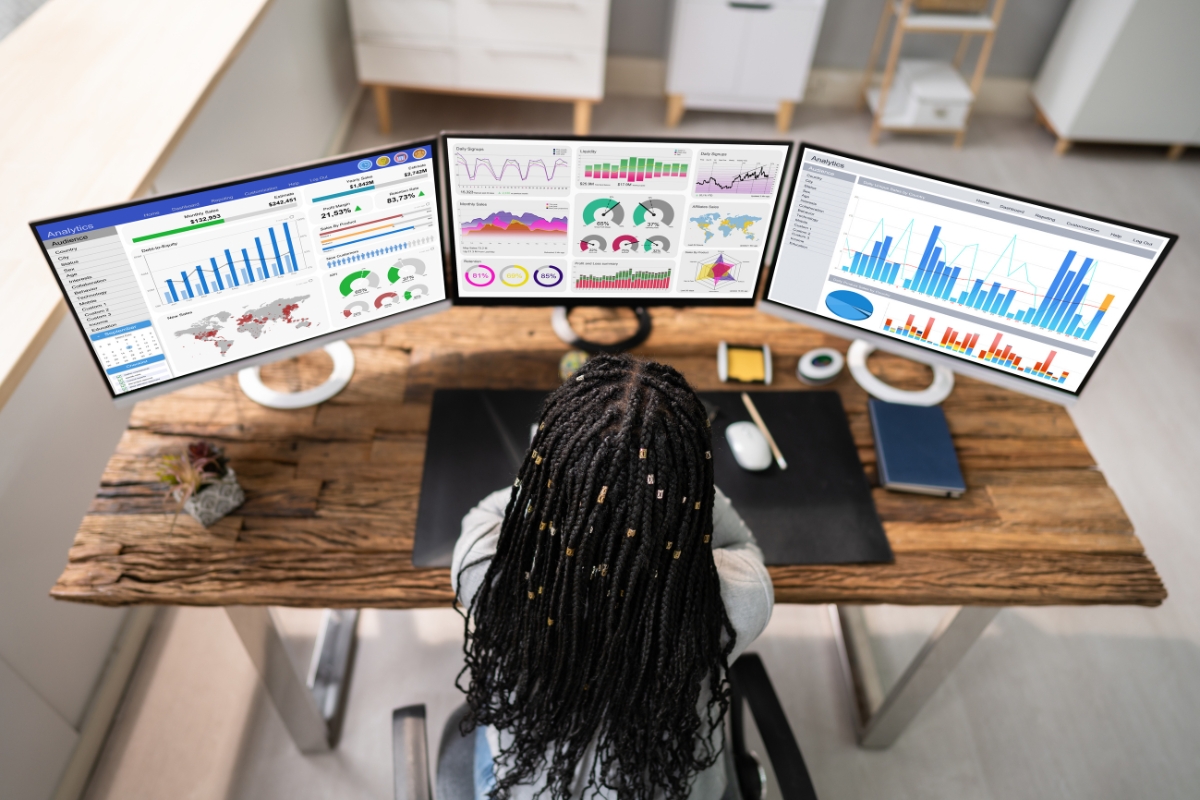Is your website‘s performance impacting your search rankings? Google‘s Core Web Vitals have become crucial for SEO success. This guide will explain the three key metrics: Largest Contentful Paint, Interaction to Next Paint, and Cumulative Layout Shift. You’ll learn how these factors affect your site’s visibility and user experience. We’ll provide practical steps to improve each metric, helping you boost your website‘s performance and search engine rankings.
Core Web Vitals Explained: How They Make or Break Your SEO
Defining the Three Core Web Vitals Metrics

Core Web Vitals comprise three key metrics: Largest Contentful Paint (LCP) for loading, Interaction to Next Paint (INP) for responsiveness, and Cumulative Layout Shift (CLS) for visual stability. These user-centric performance indicators, measured by Chromium-based browsers, are crucial for website maintenance including technical SEO and Google business profile optimization including local SEO. Understanding their thresholds helps marketers enhance user experience and improve SEO rankings.
Largest Contentful Paint (LCP) Measures Loading Performance
Largest Contentful Paint (LCP) measures how quickly the main content of a webpage loads, focusing on the largest element visible within the viewport. This metric is crucial for content writing, sales funnel marketing, and SEO across various industries, as it directly impacts user experience and conversion rates. Optimizing LCP often involves implementing lazy loading techniques and minimizing JavaScript execution time to ensure faster rendering of key content elements.
Interaction to Next Paint (INP) Assesses Responsiveness
Interaction to Next Paint (INP) measures the responsiveness of web applications by assessing the time between a user’s input and the next visual update. This metric provides valuable information about the user experience, particularly in interactive elements. By optimizing INP, developers can enhance the cache performance and overall responsiveness of their websites, contributing to improved user satisfaction and potentially better search engine rankings in countries.
Cumulative Layout Shift (CLS) Gauges Visual Stability
Cumulative Layout Shift (CLS) measures visual stability by quantifying unexpected layout shifts during page load. This metric impacts user experience by assessing how much content moves around as the page renders. Optimizing CLS involves careful management of the document object model and efficient use of JavaScript libraries, a key aspect of technical SEO. Additionally, integrating local SEO strategies can further enhance overall website performance. Web developers can improve CLS scores through proper image sizing, reserving space for dynamic content, and minification techniques. These strategies help create a smoother, more stable browsing experience across various devices and network conditions:
| Core Web Vital | What It Measures | Optimization Techniques |
|---|---|---|
| Cumulative Layout Shift (CLS) | Visual Stability | – Proper image sizing – Reserving space for dynamic content – Minification of CSS and JavaScript – Efficient DOM management |
Understanding Good, Needs Improvement, and Poor Thresholds
Research tools like SEMrush and Google search analytics to assess Core Web Vitals performance as part of their SEO strategy. By analyzing these metrics, they determine whether a website falls into the “Good,” “Needs Improvement,” or “Poor” categories. This evaluation helps businesses optimize their online presence, potentially incorporating video content to enhance user experience and improve search rankings.
How These Metrics Represent User Centric Performance
Core Web Vitals represent user-centric performance by focusing on aspects that directly impact the user experience during web interactions. These metrics, measured by both Google Search and Firefox, provide valuable insights for search engine optimization efforts. By evaluating loading speed, interactivity, and visual stability, Core Web Vitals offers a comprehensive view of a website‘s performance from the user’s perspective. This approach allows developers and marketers to prioritize improvements that enhance accessibility and overall user satisfaction, ultimately contributing to better rankings in search engine results pages.
How Core Web Vitals Influence Search Rankings and User Experience

Core Web Vitals significantly impact search rankings and user experience across browsers like Microsoft Edge and Safari. These metrics evaluate loading speed, interaction readiness, and layout stability, directly affecting user satisfaction and bounce rates. By optimizing Core Web Vitals, websites can improve their SEO performance, enhance user trust, and create a more seamless web page experience. Font optimization and efficient resource loading are key factors in achieving better Core Web Vitals scores.
Core Web Vitals as Part of the Page Experience Signals
Core Web Vitals are integral components of Google’s Page Experience signals, which influence search rankings and user experience. These metrics, including interactivity measures, work in conjunction with other factors like mobile-friendliness and safe browsing to provide a comprehensive assessment of a website’s performance.
By optimizing Core Web Vitals, businesses can enhance their marketing strategy, improving their visibility in search results and user engagement. This approach often involves careful consideration of elements such as image loading, tab functionality, and the use of performance measurement tools to ensure a smooth and responsive user experience across devices.
The Connection Between Fast Loading Times and User Satisfaction
Fast loading times significantly impact user satisfaction, forming a crucial component of core web vitals and reputation management strategies. Studies show that users expect web pages to load within seconds, with even slight delays leading to increased bounce rates. Implementing effective HTML optimization techniques and leveraging content delivery networks can dramatically improve loading speeds. Marketing automation tools can further enhance user experience by personalizing content delivery, ensuring visitors receive relevant information quickly and efficiently.
Reducing Bounce Rates Through Better Interaction Readiness
Improving interaction readiness is crucial for reducing bounce rates and enhancing web performance. Websites that respond quickly to user inputs create a more engaging experience, encouraging visitors to stay longer and explore more URLs. Lighthouse, Google‘s web performance measurement tool, evaluates interaction readiness as part of its Core Web Vitals assessment. By optimizing JavaScript execution time and minimizing layout shifts, websites can significantly improve their interaction readiness scores, leading to lower bounce rates and better search rankings.
Maintaining User Trust With Stable Page Layouts
Stable page layouts are crucial for maintaining user trust and improving overall website performance. When developers prioritize content stability above the fold, users can interact confidently with the site without frustrating shifts or jumps. This stability is particularly important for website hosting providers and businesses leveraging social media integration, as it ensures a seamless experience across various platforms. By implementing best practices for layout stability, businesses can get started on improving their Core Web Vitals scores and ultimately enhance their search rankings.
Real World Effects of Core Web Vitals Scores on SEO Performance
Core Web Vitals scores significantly impact SEO performance, influencing bounce rates and search rankings. Google‘s algorithm considers these metrics when determining page quality, with higher scores often correlating to improved search visibility. SEO professionals can use tools like Looker Studio and Google Analytics to track and analyze Core Web Vitals data, identifying areas for improvement and measuring the impact of optimizations on overall site performance.
Knowing the impact wasn’t enough. We needed tools to measure our progress.
Tools for Measuring Your Website‘s Core Web Vitals Performance

Measuring Core Web Vitals performance is crucial for optimizing website speed and user experience. This section explores essential tools for tracking these metrics, including Google Search Console’s Core Web Vitals Report, PageSpeed Insights for field data analysis, Chrome DevTools for lab data, and the Web Vitals Extension for real-time monitoring. Additionally, it covers third-party solutions that can enhance URL and document performance tracking in a learning center context.
Using Google Search Console’s Core Web Vitals Report
Google Search Console’s Core Web Vitals Report provides a comprehensive dashboard for monitoring website performance metrics. This powerful tool allows webmasters to track and analyze key indicators such as time to first byte, offering valuable insights for debugging and optimization. By leveraging this report, businesses can enhance their search engine visibility and improve overall web performance, ultimately leading to a better user experience and higher rankings in search results.
Analyzing Field Data With PageSpeed Insights
PageSpeed Insights offers valuable field data analysis for assessing Core Web Vitals performance. This Google Chrome-based tool provides comprehensive measurement of CSS, JavaScript, and other web elements, delivering analytics that helps optimize WordPress sites and other platforms. By examining real-world user experiences, PageSpeed Insights enables developers to identify and address performance bottlenecks, ultimately enhancing user satisfaction and search engine rankings.
Leveraging Chrome DevTools for Lab Data Analysis
Chrome DevTools provides powerful lab data analysis capabilities for assessing Core Web Vitals performance. Developers can use this tool to simulate various network conditions and device types, enabling them to optimize page layout and paint times for different scenarios. By examining the performance metrics in a controlled environment, web designers can fine-tune their pages, ensuring they meet Core Web Vitals standards. This approach allows for immediate feedback on changes, helping to identify and resolve issues quickly before they impact real-world user experiences.
Real Time Monitoring With the Web Vitals Extension
The Web Vitals Extension offers real-time monitoring of Core Web Vitals performance for Google Chrome users. This tool provides instant feedback on key metrics like Largest Contentful Paint and Cumulative Layout Shift directly in the browser, allowing developers to quickly identify issues with HTML elements and overall internet performance. For WordPress website audits, the extension displays a chart of Core Web Vitals scores, enabling users to track improvements and optimize their sites efficiently:
| Metric | Purpose | Visualization |
|---|---|---|
| Largest Contentful Paint (LCP) | Measures loading performance | Color-coded bar chart |
| Cumulative Layout Shift (CLS) | Assesses visual stability | Numerical score with visual indicator |
| First Input Delay (FID) | Evaluates interactivity | Time-based graph |
Third Party Solutions for Tracking Web Vitals
Third-party solutions offer comprehensive tools for tracking Core Web Vitals, enhancing website reviews and initial onboarding audits. These platforms provide advanced features for monitoring HTTP performance, server response times, and keyword research integration. By utilizing third-party solutions, businesses can gain deeper insights into their website’s performance across various metrics, enabling more effective optimization strategies:
- Advanced HTTP performance monitoring
- Server response time analysis
- Integrated keyword research tools
- Comprehensive website review features
- Customizable performance dashboards
Practical Steps to Improve Largest Contentful Paint (LCP)

Improving Largest Contentful Paint (LCP) is crucial for enhancing web core vitals and boosting visibility in search results. This section explores practical strategies to optimize server response times, efficiently load resources, address render-blocking issues, implement caching, and prioritize above-the-fold content. These techniques can significantly impact page load speed, improving user experience and potentially reducing reliance on paid advertising and email marketing.
Optimize Server Response Times for Faster Initial Loads
Optimizing server response times is crucial for improving Largest Contentful Paint (LCP) and overall SEO performance. Web design professionals can enhance usability by implementing efficient server-side caching, upgrading hardware, and optimizing database queries. Google Search Console provides valuable insights into server performance, allowing developers to identify and address bottlenecks. By reducing Time to First Byte (TTFB), websites can significantly improve their Core Web Vitals scores, leading to better search rankings and user experience. Effective link-building strategies can also contribute to faster server response times by distributing server load across multiple resources:
- Implement server-side caching
- Upgrade server hardware
- Optimize database queries
- Monitor TTFB using Google Search Console
- Utilize content delivery networks (CDNs)
Efficiently Load Images and Video Resources
Efficiently loading images and video resources is crucial for improving Largest Contentful Paint (LCP) and reducing latency. Web developers can optimize media files by compressing images, implementing lazy loading techniques, and using modern formats like WebP. For videos, employing adaptive streaming and preloading keyframes can significantly enhance load times. By prioritizing critical resources and deferring non-essential content, websites can achieve faster rendering and improved user experience, ultimately leading to better Core Web Vitals scores and search engine rankings.
Address Render Blocking CSS and JavaScript Files
Addressing render-blocking CSS and JavaScript files is crucial for improving Largest Contentful Paint (LCP) scores. Web developers can optimize performance by inlining critical CSS, deferring non-essential scripts, and utilizing asynchronous loading techniques. These strategies reduce the time it takes for browsers to render the initial content, resulting in faster page loads and improved user experience. By implementing these optimizations, websites can enhance their Core Web Vitals scores and potentially boost their search engine rankings:
- Inline critical CSS for above-the-fold content
- Defer loading of non-essential JavaScript
- Use asynchronous loading for external scripts
- Minify and compress CSS and JavaScript files
- Implement code splitting for large applications
Implement Effective Caching Strategies
Implementing effective caching strategies is crucial for improving Largest Contentful Paint (LCP) scores. Web developers can leverage browser caching, content delivery networks (CDNs), and server-side caching to reduce load times and enhance user experience. By setting appropriate cache headers and utilizing cache-control directives, websites can ensure that static resources are stored locally on users’ devices, minimizing server requests and accelerating page rendering. These optimizations contribute to better Core Web Vitals scores and improved search engine rankings:
- Set appropriate cache headers for static resources
- Utilize CDNs for faster content delivery
- Implement server-side caching mechanisms
- Use cache-control directives to manage resource freshness
- Optimize cache duration for different types of content
Prioritize Above the Fold Content Loading
Prioritizing above-the-fold content loading significantly improves Largest Contentful Paint (LCP) scores. Web developers can optimize critical rendering paths by inlining essential CSS, deferring non-critical scripts, and implementing techniques like lazy loading for images below the fold. This approach ensures that the most important content renders quickly, enhancing user experience and improving Core Web Vitals metrics. By focusing on above-the-fold optimization, websites can achieve faster initial page loads and potentially boost their search engine rankings.
Strategies for Optimizing Interaction to Next Paint (INP)

Optimizing Interaction to Next Paint (INP) is crucial for enhancing user experience and SEO performance. This section explores strategies to reduce JavaScript execution time, break down long tasks, minimize input delay, optimize third-party scripts, and address slow event callbacks. By implementing these techniques, websites can improve responsiveness, boost Core Web Vitals scores, and potentially increase search rankings.
Reduce JavaScript Execution Time
Reducing JavaScript execution time is critical for optimizing Interaction to Next Paint (INP) and improving overall website performance. Developers can achieve this by minimizing the use of large JavaScript libraries, implementing code-splitting techniques, and utilizing lazy loading for non-essential scripts. By optimizing JavaScript execution, websites can significantly enhance their responsiveness, leading to better user experiences and potentially improved search engine rankings.
Break Down Long Tasks on the Main Thread
Breaking down long tasks on the main thread is essential for optimizing Interaction to Next Paint (INP) and improving overall web performance. Developers can achieve this by splitting complex operations into smaller, manageable chunks and utilizing techniques like requestAnimationFrame() or requestIdleCallback() to schedule non-critical work during idle periods. This approach prevents the main thread from being blocked for extended periods, ensuring smoother interactions and faster visual updates. By implementing these strategies, websites can enhance their responsiveness and provide a better user experience, potentially leading to improved search engine rankings:
| Technique | Description | Benefit |
|---|---|---|
| Task Splitting | Divide complex operations into smaller chunks | Prevents main thread blocking |
| requestAnimationFrame() | Schedule non-critical work during frame rendering | Improves visual smoothness |
| requestIdleCallback() | Execute tasks during browser idle periods | Enhances overall responsiveness |
Minimize Input Delay for User Interactions
Minimizing input delay for user interactions is crucial for optimizing Interaction to Next Paint (INP) and enhancing the overall user experience. Web developers can achieve this by implementing event delegation, using passive event listeners, and optimizing JavaScript execution. By reducing the time between user input and visual feedback, websites can significantly improve their responsiveness and Core Web Vitals scores, potentially leading to better search engine rankings and increased user engagement.
Optimize Third Party Script Performance
Optimizing third-party script performance is crucial for improving Interaction with Next Paint (INP) and overall website responsiveness. Web developers can enhance performance by implementing async and defer attributes, loading scripts dynamically, and utilizing resource hints like pre-connect and DNS-prefetch. These techniques reduce the impact of external scripts on page load times and user interactions, contributing to better Core Web Vitals scores and potentially improved search engine rankings. By carefully managing third-party resources, websites can maintain functionality while minimizing performance overhead:
- Use async and defer attributes for non-critical scripts
- Implement dynamic script loading techniques
- Utilize resource hints for faster connections
- Regularly audit and remove unnecessary third-party scripts
- Consider self-hosting critical third-party resources
Identify and Address Slow Event Callbacks
Identifying and addressing slow event callbacks is crucial for optimizing Interaction to Next Paint (INP) and improving overall website responsiveness. Web developers can use performance profiling tools to pinpoint bottlenecks in event handling code, focusing on optimizing frequently triggered events and minimizing DOM manipulation within callbacks. By streamlining event listeners and implementing efficient algorithms, websites can significantly reduce response times to user interactions, enhancing Core Web Vitals scores and potentially boosting search engine rankings.
Techniques to Minimize Cumulative Layout Shift (CLS)

Minimizing Cumulative Layout Shift (CLS) is crucial for improving user experience and SEO performance. This section explores effective techniques to reduce unexpected layout shifts, including proper sizing of media elements, reserving space for dynamic content, managing web fonts, avoiding content insertion above existing elements, and utilizing CSS transform animations. By implementing these strategies, websites can enhance their Core Web Vitals scores and potentially boost their search engine rankings.
Specify Size Attributes for Images and Video Elements
Specifying size attributes for images and video elements is a crucial technique for minimizing Cumulative Layout Shift (CLS) and improving overall website performance. By explicitly defining width and height attributes for media elements, web developers can prevent unexpected layout shifts as content loads, ensuring a smoother user experience. This practice allows browsers to allocate the correct amount of space for each element before it loads, maintaining visual stability and contributing to better Core Web Vitals scores.
Reserve Adequate Space for Ads and Embedded Content
Reserving adequate space for ads and embedded content is essential for minimizing Cumulative Layout Shift (CLS) and improving user experience. Web developers can implement placeholder elements or set specific dimensions for ad containers, ensuring that the layout remains stable as content loads. This approach prevents unexpected shifts that can disrupt user interactions and negatively impact Core Web Vitals scores. By proactively allocating space for dynamic elements, websites can maintain visual consistency and potentially improve their search engine rankings:
- Use placeholder elements for ad spaces
- Set specific dimensions for ad containers
- Implement responsive design techniques for embedded content
- Use CSS to reserve space for dynamically loaded elements
- Monitor and adjust reserved spaces based on actual content sizes
Manage Web Fonts to Prevent Layout Shifts
Managing web fonts effectively is crucial for preventing layout shifts and optimizing Cumulative Layout Shift (CLS) scores. Web developers can implement font loading strategies such as using the font-display CSS property to control how custom fonts are rendered before they’re fully loaded. By utilizing system fonts as fallbacks and preloading critical fonts, websites can maintain visual stability while ensuring a smooth transition to custom typefaces. These techniques help minimize unexpected layout changes, contributing to better Core Web Vitals scores and potentially improving search engine rankings.
Avoid Inserting Content Above Existing Content Dynamically
Avoiding the insertion of content above existing elements dynamically is crucial for minimizing Cumulative Layout Shift (CLS) and improving user experience. Web developers should prioritize adding new content below the viewport or using fixed-size containers to maintain layout stability. By implementing these strategies, websites can prevent unexpected shifts that disrupt user interactions and negatively impact Core Web Vitals scores. This approach not only enhances visual consistency but also contributes to better search engine rankings:
- Add new content below the viewport
- Use fixed-size containers for dynamic content
- Implement smooth transitions for content updates
- Utilize CSS grid or flexbox for stable layouts
- Consider user-triggered content expansion techniques
Use CSS Transform Animations Instead of Layout Triggering Properties
Using CSS transform animations instead of layout-triggering properties is a powerful technique for minimizing Cumulative Layout Shift (CLS) and enhancing website performance. By leveraging CSS transforms, web developers can create smooth, efficient animations that don’t cause reflows or repaints, reducing the risk of unexpected layout shifts. This approach not only improves Core Web Vitals scores but also contributes to a more seamless user experience, potentially boosting search engine rankings and overall website effectiveness.
Frequently Asked Questions
What are the three Core Web Vitals metrics defined by Google?
Google‘s Core Web Vitals consist of three key metrics: Largest Contentful Paint (LCP), which measures loading performance; First Input Delay (FID), which assesses interactivity; and Cumulative Layout Shift (CLS), which evaluates visual stability. These metrics help evaluate user experience on websites.
How do Core Web Vitals affect search engine rankings?
Core Web Vitals significantly impact search rankings by measuring user experience factors like page load speed, interactivity, and visual stability. Google uses these metrics to evaluate website performance and prioritize sites that offer better user experiences in search results.
Which tools can measure a website‘s Core Web Vitals performance?
Several tools can measure a website‘s Core Web Vitals performance, including Google PageSpeed Insights, Chrome DevTools, Lighthouse, Web Vitals Chrome extension, and Google Search Console. These tools provide detailed insights into metrics like Largest Contentful Paint, First Input Delay, and Cumulative Layout Shift.
What steps can improve Largest Contentful Paint (LCP) for better performance?
To improve Largest Contentful Paint (LCP), optimize image sizes, leverage browser caching, minimize render-blocking resources, use a content delivery network (CDN), implement lazy loading, and prioritize critical CSS. These techniques can significantly enhance page load speed and overall performance.
How can websites minimize Cumulative Layout Shift (CLS)?
To minimize Cumulative Layout Shift (CLS), websites should predefine image and media dimensions, reserve space for dynamic content, avoid inserting content above existing elements, use CSS transform for animations, and optimize web fonts. These practices help maintain visual stability during page load, improving user experience.
Fix Core Web Vitals Now Before Your Rankings Drop With Newman Web Solutions
Google’s Core Web Vitals are now critical ranking factors that directly impact your site’s visibility and user experience. At Newman Web Solutions, we specialize in performance optimization that boosts your LCP, reduces CLS, and improves FID—transforming your website into a search engine favorite while keeping visitors engaged. Don’t let slow load times or layout shifts sabotage your SEO efforts. Take the first step toward better rankings today! Call (404) 301-9189 or schedule your free 30-minute strategy session online to discover how we can optimize your site’s performance and help you climb search results.





